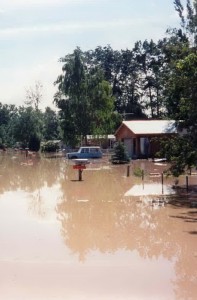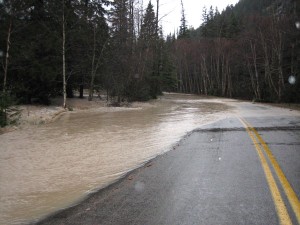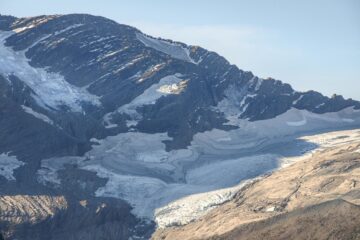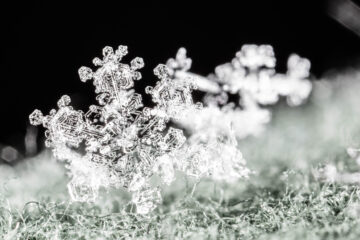by Patti Mason
A lot of people think floods only happen in the Midwest, or east of the Mississippi River. Are we really safe from floods here? No. A flood happens when there is more water flowing down a river channel than the river can hold. Some of the water, called runoff, is forced to flow out over the riverbanks into the adjacent land, called the floodplain. The amount of runoff varies from year to year due to variations in snow and rainfall we receive. Some winters are snowier than others! Spring temperatures and rain can speed up or slow down the melting too. A quick melt can produce flooding.
But not all floods are the same. You may have heard of the 100 year flood? It is not one that happens once a century! A 100-year flood can happen any year, and could happen several years in a row. Each year, scientists record the amount of precipitation and runoff. Using statistics, the weather records help establish a probability or likelihood to have a certain runoff. A 1-year flood has a 100% chance of happening every year. This runoff amount will not be large. A 10-year flood is the volume that has a 10% chance of happening every year, and will bring a larger runoff volume. A 100-year flood has a 1% chance of happening. Good thing, because it is much bigger! A 500 year flood has a 0.2% chance of happening this year or any year. Those types of floods don’t happen often, but when they do, look out!
Since they don’t happen very often, people can forget about floods. They may build their house or business in the floodplain. It can get flooded! What should you do if there is a flood at your home? Don’t be scared, be prepared! Before the flood happens, you and your family should have a plan. Check out the resources below to help you make a good plan. Don’t walk or drive in a flooded area.
Floods can happen any time of the year, but are more common in spring. In October 2006, a strong thunderstorm got stuck over Glacier National Park. Lots of rain fell in one spot over a short period of time. The heavy rain caused a flash flood in McDonald Creek, washing out the Going-to-the-Sun Highway, bridges and overlooks. It damaged Many Glacier on the east side too.
To watch for flood potential this year, check out http://www.nws.noaa.gov/oh/hic/nho/ and its associated links, http://water.weather.gov/ahps/, and http://www.noaawatch.gov/floods.php.
Educational Materials
http://science.howstuffworks.com/nature/natural-disasters/flood.htm
Flood Awareness Teachers Packet. Designed for grades 6-9, contains math, science and social studies background info, photos, maps, activities and worksheets. Contact Flathead Conservation District to receive a copy at 752-4220.
Flood Preparation and Safety:
http://www.floodsmart.gov/floodsmart/pages/preparation_recovery/before_a_flood.jsp
http://www.ready.gov/floodawareness
http://www.fema.gov/hazard/flood/index.shtm http://www.floodsmart.gov/floodsmart/pages/preparation_recovery/pr_overview.jsp





![Margaret Barr's "Strange Children" [ballet], 1955 / photographer unknown](https://flatheadcore.org/wp-content/uploads/2024/03/4944459226_e4c3f8fe5b_o-360x240.jpg)